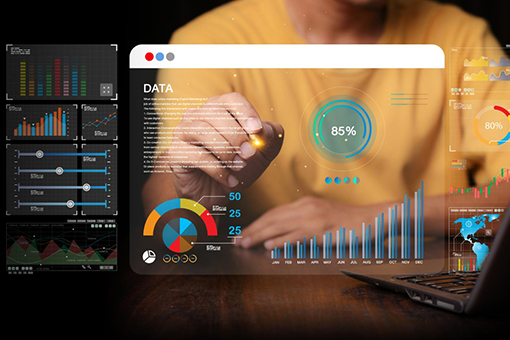Over 80% of enterprises are planning to modernize their BI stack this year—and many are choosing Power BI. But if you’re responsible for data, analytics, or digital transformation, you know this isn’t just about tool replacement. It’s about getting serious ROI from data.
Handled well, Power BI migration unlocks cleaner architecture, faster insights, and real self-serve adoption across the business. Done carelessly? It becomes a costly detour.
This guide is designed for enterprise decision-makers who want the migration to drive value from day one—not six months later. These are hard-won insights from actual migrations, shared so you don’t have to learn them the hard way.
Table of Contents
Why Enterprises Are Choosing Power BI

Different companies have different reasons for switching. But across the board, we see a few common drivers:
- Legacy BI platforms are slow, expensive, or too complex to maintain
- Excel-based reporting is hard to govern and impossible to scale
- Teams want real-time dashboards that are actually easy to use
- CIOs are pushing for tool consolidation inside the Microsoft ecosystem
- There’s growing demand for governed, self-serve data access at scale
Before You Migrate: Lay the Groundwork
The biggest migration issues often stem from things that weren’t addressed early enough. Here’s what you should focus on before the migration even begins:
- Take inventory of all reports, dashboards, data sources, and user groups
- Identify what matters—which reports are business-critical, which are duplicated, and which are no longer in use
- Understand dependencies—especially external data sources, legacy systems, or hardcoded logic
- Align on scope—will this be a full redesign, a phased rebuild, or a straight lift-and-shift (hint: rarely is it just that)
- Bring in stakeholders early—IT, data teams, business users, and leadership all need to be on the same page
- Sort out licensing and capacity—Power BI Pro vs Premium, workspace setup, and storage needs matter more than most teams realize
Rushing this phase usually means redoing work later. Take the time to get it right.
Your Power BI Migration Plan: Step-by-Step

You don’t need to reinvent the wheel—just follow a proven, structured path:
1. Discovery & Assessment
Start by cataloging your current BI environment. What exists, what’s used, what’s broken?
2. Prioritization & Planning
Break the work into phases—by department, report type, or business unit. Focus on quick wins early.
3. Data Model Redesign
Build clean, efficient models using Power BI best practices. Star schema, centralized datasets, and optimized DAX matter here.
4. Report Rebuilding
Recreate key reports in Power BI—redesigned where needed, simplified where possible.
5. Testing & Validation
Involve business users early. Side-by-side comparisons and user acceptance testing are key.
6. Training & Enablement
Support adoption with live sessions, role-specific walkthroughs, and easy documentation.
7. Deployment & Governance
Set up workspace structures, permissions, refresh schedules, and access control. Build in audit and monitoring from day one.
Lessons from the Field: What Works and What Doesn’t

✅ What Works:
- Redesigning messy reports before migrating them
- Using certified datasets to avoid chaos
- Keeping models lean and query performance high
- Bringing users into the process—early and often
- Tracking usage post-launch to drive continuous improvement
🚫 What to Avoid:
- Moving unused or duplicate reports “just in case”
- Skipping training because “Power BI is intuitive”
- Ignoring governance—especially on shared datasets
- Trying to migrate everything all at once
- Assuming Power BI works the same way as your old tool—it doesn’t
Real Results from Real Enterprises

- A global manufacturing company cut reporting turnaround time by 70% by retiring a legacy BI platform and rebuilding in Power BI
- A financial services firm improved analytics adoption 3x by centralizing their datasets and enabling role-based access
- A retail chain cut BI licensing costs by 40% by consolidating tools under Power BI Premium
Choose the Right Partner to Get It Right
A Power BI migration isn’t just about dashboards. It’s about building a foundation for decision-making across your business. And like any strategic change, having the right partner makes all the difference.
At Data Semantics, we help enterprises migrate with confidence—from discovery to deployment, and everything in between.
- We rebuild reports for performance, clarity, and scale
- We align your data model to Power BI’s strengths—not just copy what existed
- We support adoption with live enablement, documentation, and ongoing optimization
- And we build governance into every layer—so your BI is secure, trusted, and scalable
If you’re planning a migration and want to get it right the first time, we’re here to help.













